Wistron NeWeb DFCN4 NFC Module User Manual WG3004A U5 Product Specification
Wistron NeWeb Corporation NFC Module WG3004A U5 Product Specification
Contents
USERS MANUAL
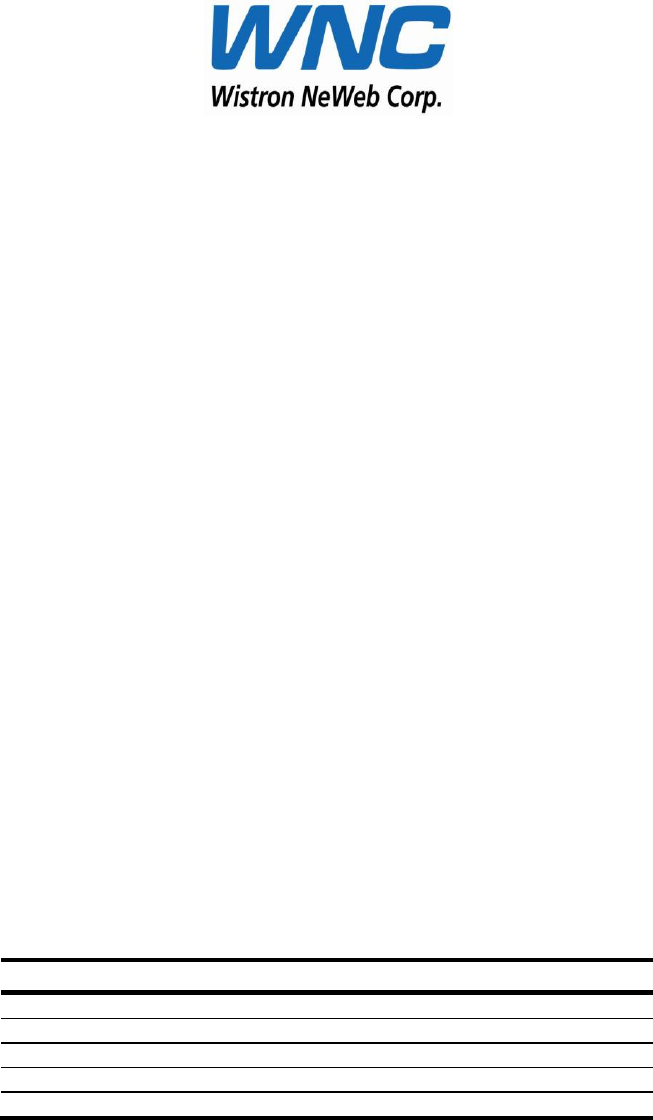
DFCN-4 User manual
(V0.3)
Model Name: DFCN-4 NFC MODULE
Description: NFC reader/writter module compatible
Edition #
Reason for revision
Issue date
V0.1
Initial Document
2013/12/17
V0.2
For regular document applied
2014/1/2
V0.3
Adding ICES-003 warning
2014/1/27
This document contains proprietary information which is the property of Wistron NeWeb Corporation
and is strictly confidential and shall not be disclosed to others in whole or in part, reproduced, copied, or
used as basic for design, manufacturing or sale of apparatus without the written permission of Wistron
NeWeb Corporation.
NFC module Delivery Specification V0.3
1
I. Introduction
DFCN-4 is a kind of NFC (Near Field Communication) module that could be embedded in one IT
system by simply connecting the module through I2C interface and start developing his application
software.
II. DESIGN REFERENCE
DFCN-4 build a contactless front-end towards contactless applications available on existing system.
Integrated MCU is decoupling the host controller from the timing constrains of RF communication and
allowing autonomous operation, it provides flexible and integrated power management unit for RF
front-end.
DFCN-4 reference design module consists of the following:
• Reference Design:
When the user wishes to incorporate the DFCN-4 to their device, it is strongly recommended that this
reference design is copied “as is” in the final application board to guarantee optimum performance,
regulatory compliance and lowest development time and design effort.
• MCU FPC/FFC Connector:
Allow user to connect the DFCN-4 module to the host board via FPC/FFC connector.
• Antenna Connector:
Connected to FPC antenna, please note that matching circuitry should designed on antenna.
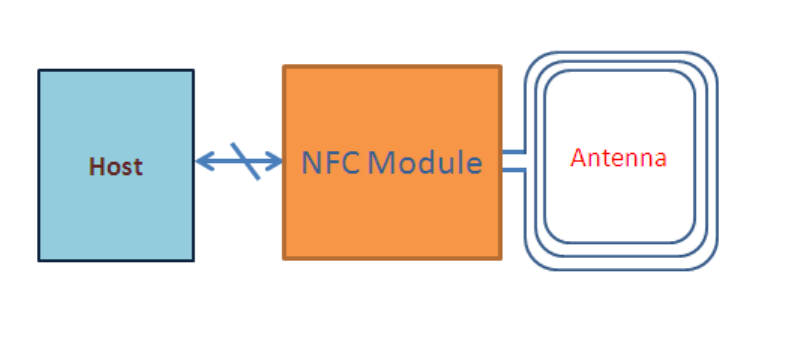
NFC module Delivery Specification V0.3
2
III. Hardware Block Diagram
DFCN-4 is a full feature NFC module and compliant with NFC standards (NFC Forum, EMVCo,
ETSI/SCP). DFCN-4 has an optimized architecture for low-power consumption in different
operation modes. The RF contactless front-end is supporting various transmission modes according
to NFCIP-1, NFCIP-2, ISO/IEC14443, ISO/IEC 15693, ISO-14443, MIFARE, and FeliCa
specifications. The major internal components are illustrated in Figure 1-1.
Figure 1-1 NFC module Major Component and System Interface
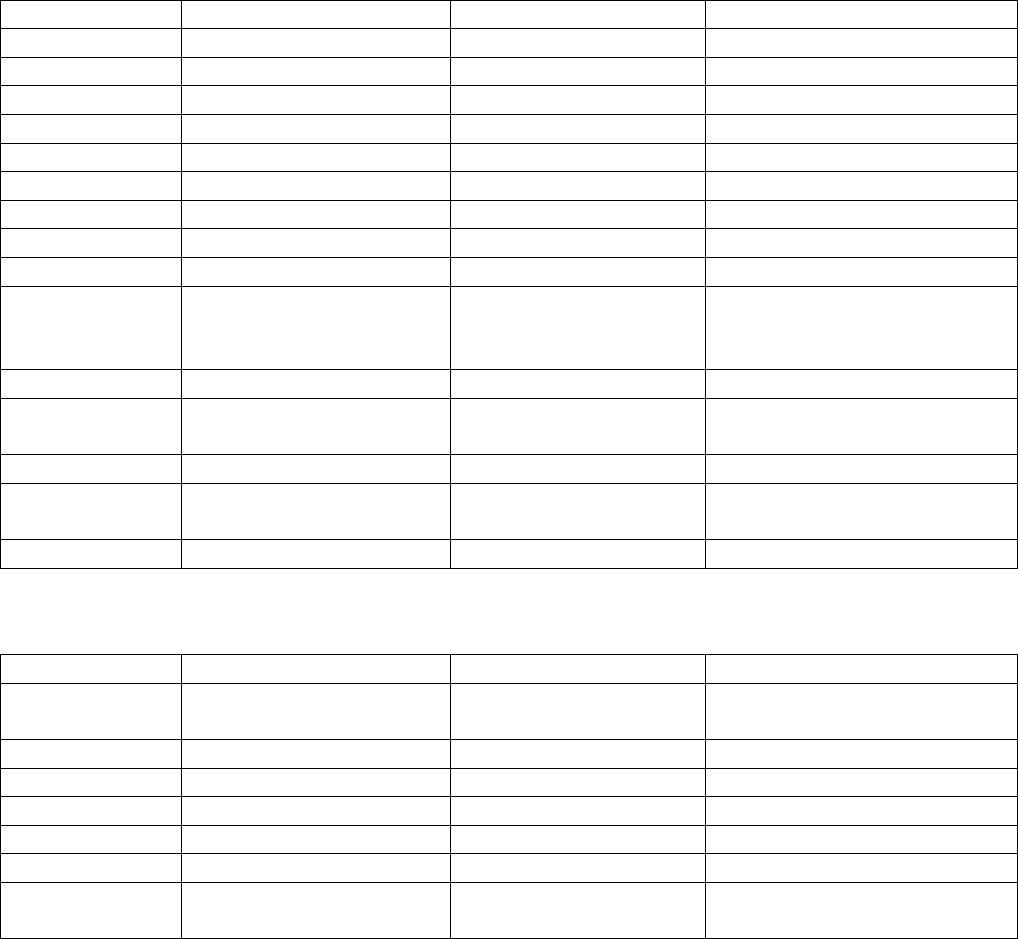
NFC module Delivery Specification V0.3
3
IV. Pin Definition
Host connector
Antenna connector
Pin number
Name
Configuration
Description
1
MOD_VDD
Power
3.3V power supply
2
MOD_GND
Ground
Module ground
3
SWP
SWP data
SWP data line to UICC/SIM
4
VCC_BOOST
Power supply
Power rail for Booster
5
IRQ
Output
Interrupt to host
6
PMUVCC
Power supply
Power supply to UICC/SIM
7
I2C_SDA
Input/ Output
I2C data line
8
I2C_SCL
Input
I2C clock
9
MOD_GND
Ground
Module ground
10
Reset/Wakeup
Input
Wake up the module from
standby mode or reset the
module
11
DWL_REQ
Input
Firmware download control
12
SIMVCC
Power
The power rail used to power
UICC/SIM.
13
MOD_VDD
Power
3.3V power supply
14
VDD_IO
Power
3.3V for host IO reference
voltage
15
MOD_GND
Ground
Module ground
Pin number
Name
Configuration
Description
1
ANT1
Power
Antenna connection for Card
emulation
2
RXP
Input
Contactless receiver input
3
TX1
Contactless receiver output 1
4
GND
Ground
Transmitter ground
5
TX2
Contactless receiver output 2
6
RXN
Input
Contactless receiver input
7
ANT2
Power
Antenna connection for Card
emulation
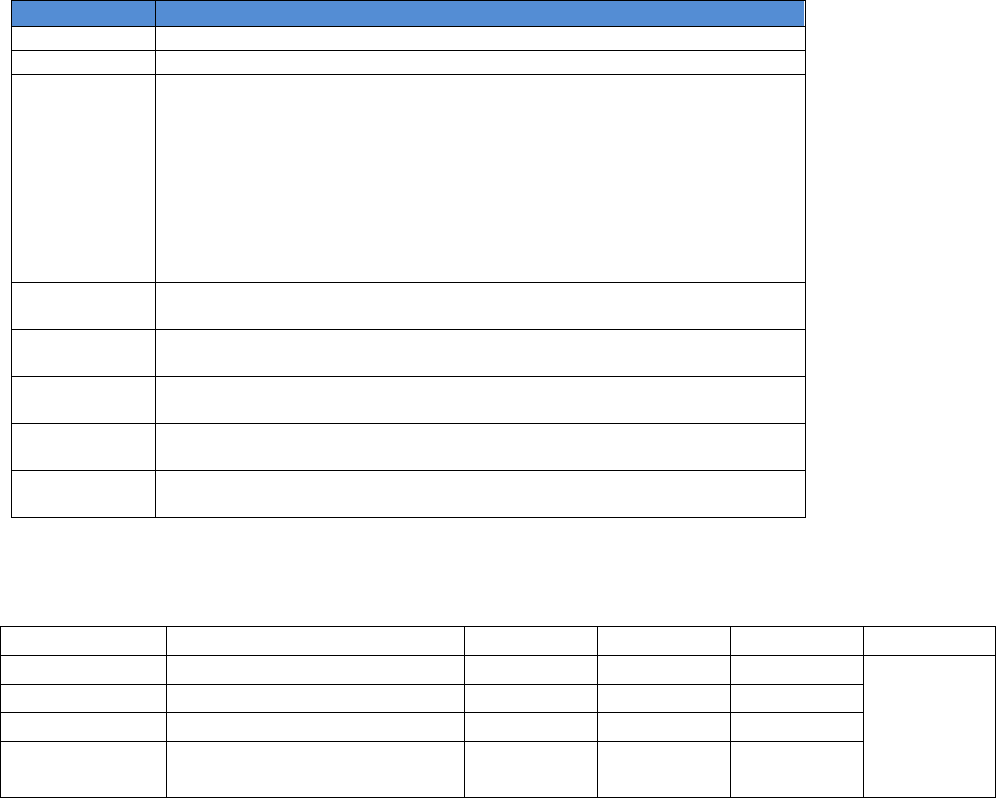
NFC module Delivery Specification V0.3
4
V. Specification/Feature
Item
Standard specifications
Main chipset
NXP NPC100
Frequency
13.56MHz
NFC
Standards
ISO/IEC 14443A, ISO/IEC 14443B PCD
FeliCa PCD mode
Mifare PCD encryption mechanism
ISO/IEC 15693/ICODE VCD mode
NFC Forum tags
NFCIP-1/NFCIP-2 protocol
EMVCo 2.0.1 for PICC and PCD mode
NFC Forum Wave 1 and Wave 2
ETSI/SCP 102 613 and 102 622 for SWP/HCI
Host interface
NCI protocol interface according to NFC Forum NCI 1.0 standardization
I2C High-speed mode supported
Host
connector
15 pin FPC/FFC
Antenna
connector
7 pin FPC/FFC
Operation
temperature
0o ~ 85o C
Storage
temperature
-20o ~ 125o C
VI. Electrical Characteristics
Symbol
Parameter
Min
Typical
Maximum
Unit
MOD_VDD
Power supply input
2.7
3.3
5.5
V
VDD_IO
IO power supply
3.0
3.3
3.6
VCC_BOOST
Power supply input
-
5.0
5.5
VDD_SIM
Power supply for SWP
interface
1.62
3.6
Note. Test without operating booster
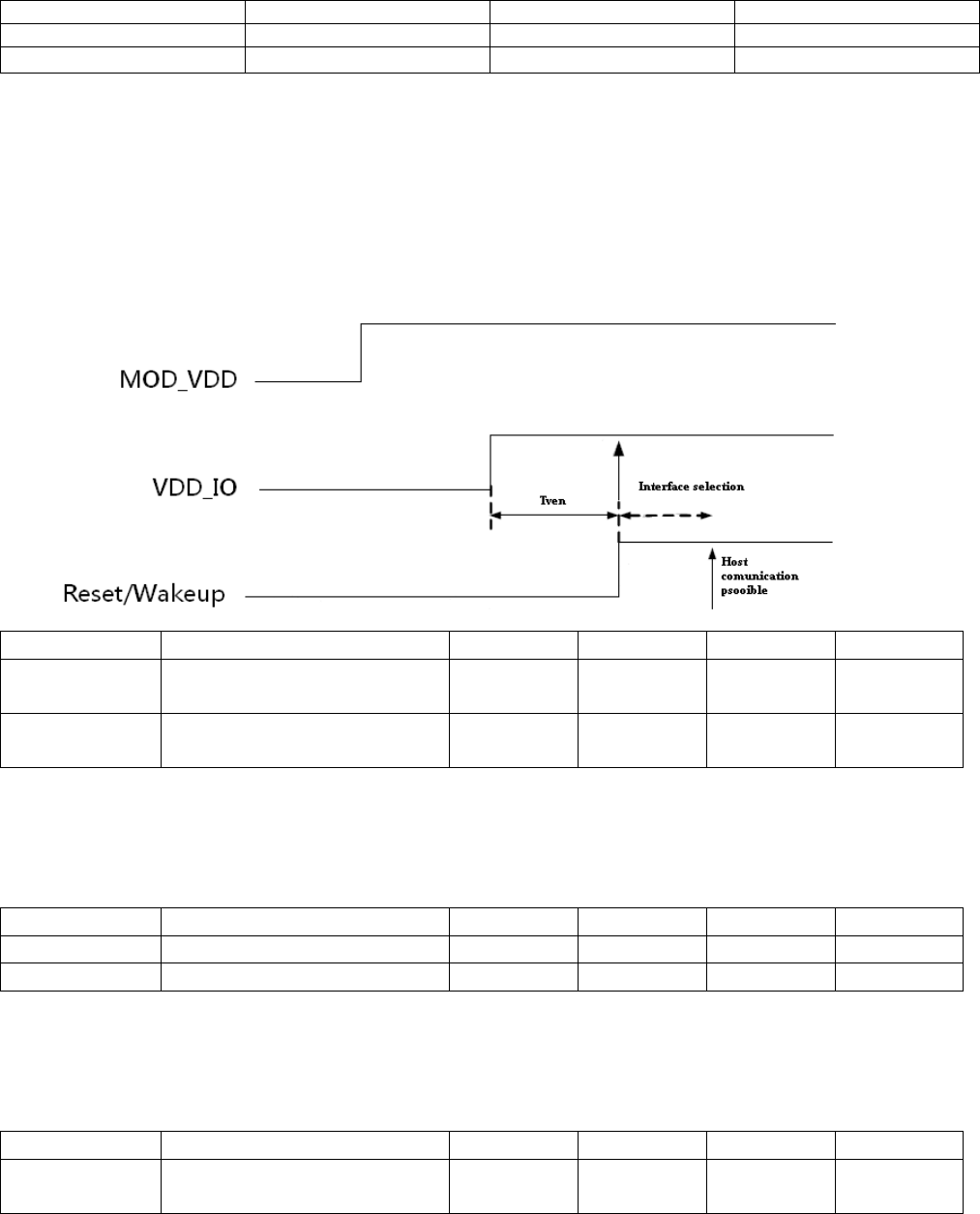
NFC module Delivery Specification V0.3
5
VII. Recommended Operation Conditions
Supply voltage
AC mains
DC
Type of DC Source
Internal DC supply
External DC adapter
Battery
Operational Climatic
Tnom (20°C)
Tmax (85°C)
Tnim (-25°C)
VIII. Power sequence
i. Power up
Symbol
Parameter
Min
Typical
Maximum
Unit
TVBATVEN
Minimum time from VBAT
high to VEN high
0
-
-
ms
TPVDDVEN
Minimum time from PVDD
high to VEN high
0
-
-
ms
ii. Reset
Symbol
Parameter
Min
Typical
Maximum
Unit
TRESETVEN
VEN pulse width to rest
3
-
-
us
TBOOT
Boot time
-
-
2.5
ms
iii. Down load mode
Symbol
Parameter
Min
Typical
Maximum
Unit
TGPIO4VEN
DWL_REQ voltage high to
VEN high
0
-
-
ms

NFC module Delivery Specification V0.3
6
IX. Assembly Guidelines
X. Mechanical Dimension
NKR-DFCN4
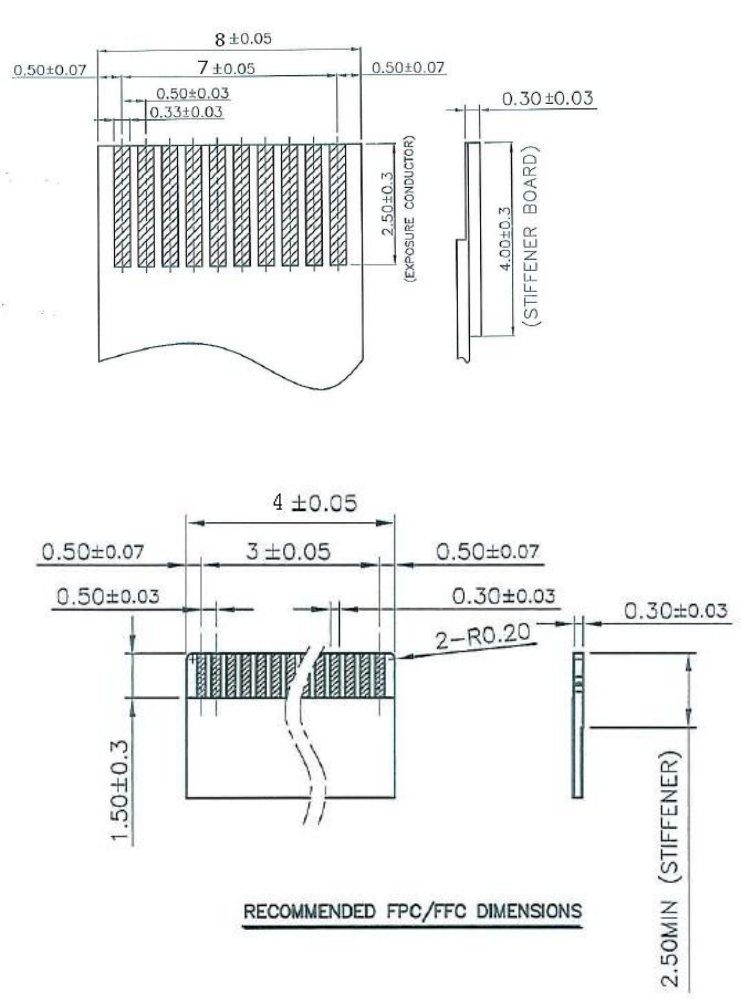
NFC module Delivery Specification V0.3
7
XI. FPC/FFC specifications
i. AFC45-S15H1A-HF : 15 pin FFC
ii. AFC26-S07F1A-HF : 7 pin FFC

NFC module Delivery Specification V0.3
8
XII. Certifications and Regulatory
Item
Feature
Description
6.1
FCC
RF: FCC part 15C
EMI: FCC part 15B
FCC grant: TCB Filing fee
6.2
CE
RF: EN302291 Class B
EMC: EN301489-1/-3
Safety: EN 60950-1:2006/A11:2009
6.3
IC
RSS-210 ISSUE 8
RSS-GEN ISSUUE 3
General:
This modular approval is limited to OEM/Integrators installation only.
OEM integrators are responsible for ensuring that the end-user has no manual instructions to remove or
install module.
End Product Labeling (FCC)
When the module is installed in the host device, the FCC ID label must be visible through a window on
the final device or it must be visible when an access panel, door or cover is easily re-moved. If not, a
second label must be placed on the outside of the final device that contains the following text: “Contains
FCC ID: __ NKR-DFCN4__
The grantee's FCC ID can be used only when all FCC compliance requirements are met.
Required FCC Compliance Statement for Host Integration
To integrate this module into the host, the host manufacturer is responsible for the applicable FCC rules,
including the limits for a Class B digital device, pursuant to Part 15 of the FCC Rules.
In the user manual of the host device, the following statements are required to be included.
This device complies with part 15 of the FCC Rules. Operation is subject to the following two
conditions: (1) This device may not cause harmful interference, and (2) this device must accept any
interference received, including interference that may cause undesired operation.
This device has been tested and found to comply with the limits for a Class B digital device,
pursuant to Part 15 of the FCC Rules. These limits are designed to provide reasonable protection
against harmful interference in a residential installation. This equipment generates, uses and can
radiated radio frequency energy and, if not installed and used in accordance with the instructions,
may cause harmful interference to radio communications. However, there is no guarantee that
interference will not occur in a particular installation If this equipment does cause harmful

NFC module Delivery Specification V0.3
9
interference to radio or television reception, which can be determined by turning the equipment off
and on, the user is encouraged to try to correct the interference by one or more of the following
measures:
–Reorient or relocate the receiving antenna.
–Increase the separation between the equipment and receiver.
–Connect the equipment into an outlet on a circuit different from that to which the receiver is
connected.
–Consult the dealer or an experienced radio/TV technician for help.
Changes or modifications not expressly approved by the party responsible for compliance could
void the user„s authority to operate the equipment.
FCC Module Integration Restriction:
This module has been certified by FCC as single module approval with the following restrictions:
1. The Loop antenna was verified in the conformity testing, and for compliance the antenna shall not be
modified. A separate approval is required for all other operating configurations, including different
antenna configurations.
2. If any other simultaneous transmission radio is installed in the host platform together with this
module, or above restrictions cannot be kept, a separate RF exposure assessment and FCC equipment
authorization is required.
End Product Labeling (IC)
Labeling Requirements for the Host Device (from Section 3.2.1, RSS-Gen, Issue 3, December 2010):
The host device shall be properly labeled to identify the module within the host device. The Industry
Canada certification label of a module shall be clearly visible at all times when installed in the host
device, otherwise the host device must be labeled to display the Industry Canada certification number of
the module, preceded by the words ―Contains transmitter module, or the word ―Contains, or similar
wording expressing the same meaning, as follows: "Contains transmitter module IC:_ 4441A-DFCN4_.
Required IC Compliance Statement for Host Integration
To integrate this module into the host, the host manufacturer is responsible for the applicable Industry
Canada rules, including the limits for a Class B digital device, pursuant to ICES-003 of the Industry
Canada Rules
In the user manual of the host device, the following statements are required to be included.
This device complies with Industry Canada license-exempt RSS standard(s). Operation is subject to
the following two conditions:
(1) this device may not cause interference, and

NFC module Delivery Specification V0.3
10
(2) this device must accept any interference, including interference that may cause undesired
operation of the device.
This Class B digital apparatus complies with Canadian 4441A-DFCN4.
Le présent appareil est conforme aux CNR d'Industrie Canada applicables aux appareils radio
exempts de licence. L'exploitation est autorisée aux deux conditions suivantes:
(1) l'appareil ne doit pas produire de brouillage, et
(2) l'utilisateur de l'appareil doit accepter tout brouillage radioélectrique subi, même si le
brouillage est susceptible d'en compromettre le fonctionnement."
Cet appareil numérique de la classe B est conforme à la norme 4441A-DFCN4 du Canada.
IC Module Integration Restriction:
This module has been certified by Industry Canada as modular approval with the following restrictions:
1. The Loop antenna was verified in the conformity testing, and for compliance the antenna shall not be
modified. A separate approval is required for all other operating configurations, including different
antenna configurations.
2. If any other simultaneous transmission radio is installed in the host platform together with this
module, or above restrictions cannot be kept, a separate RF exposure assessment and IC equipment
certification is required.
Warning
According to “Administrative Regulations on Low Power Radio Waves Radiated Devices” Without permission granted
by the NCC, any company, enterprise, or user is not allowed to change frequency, enhance transmitting power or alter
original characteristic as well as performance to a approved low power radio-frequency devices.
The low power radio-frequency devices shall not influence aircraft security and interfere legal communications; If
found, the user shall cease operation immediately until no interference is achieved. The said legal communications
means radio communications is operated in compliance with the Telecommunications Act. The low power
radio-frequency devices must be susceptible with the interference from legal communications or ISM radio wave
radiated devices”
CAN ICES-3(B)/ NMB-3(B)
NFC module Delivery Specification V0.3
11
According to “Administrative Regulations on Low Power Radio Waves Radiated Devices” Without permission granted
by the NCC, any company, enterprise, or user is not allowed to change frequency, enhance transmitting power or alter
original characteristic as well as performance to a approved low power radio-frequency devices.
The low power radio-frequency devices shall not influence aircraft security and interfere legal communications; If
found, the user shall cease operation immediately until no interference is achieved. The said legal communications
means radio communications is operated in compliance with the Telecommunications Act. The low power
radio-frequency devices must be susceptible with the interference from legal communications or ISM radio wave
radiated devices”